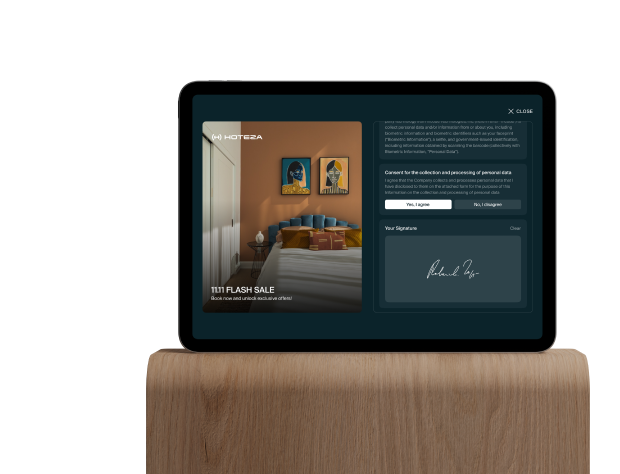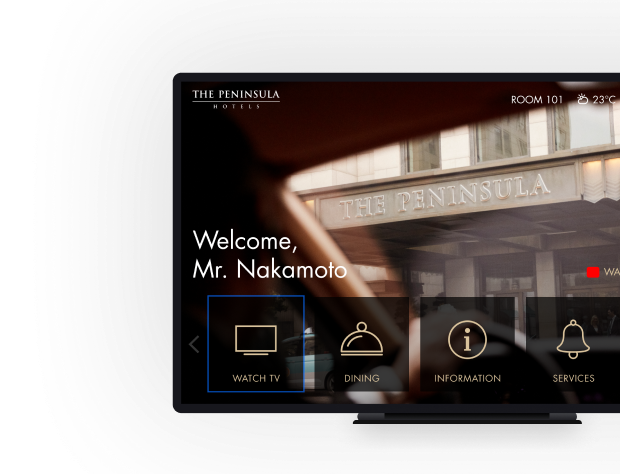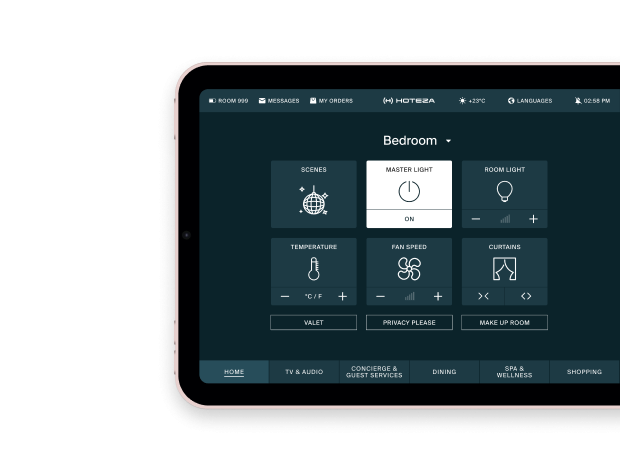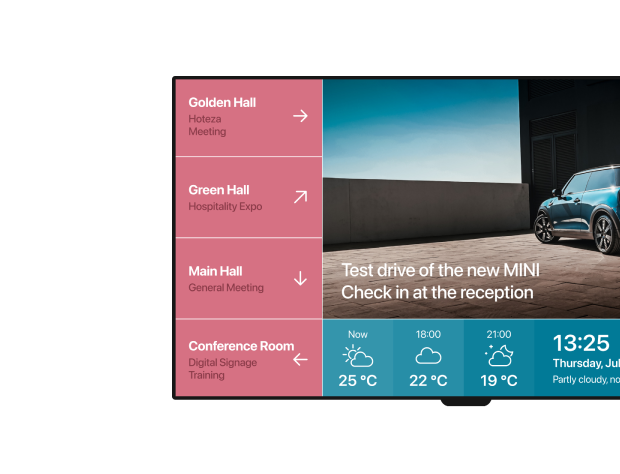05.05.2025й
What Is ADR in Hotels and How to Improve It?
Master the metric that defines your hotel’s rate strategy and profitability. Learn what ADR (Average Daily Rate) means in hotels, how to calculate it, and which pricing, upselling, and tech tactics can help increase room revenue.

What Is ADR in Hotels and How to Calculate It
One of the most important questions for hoteliers is, “What is ADR in hotel operations, and why does it matter?” ADR, short for Average Daily Rate, is a core metric that helps you understand the revenue performance of your rooms. By knowing how to calculate ADR in a hotel, you can fine-tune your pricing strategies, forecast revenue more accurately, and even streamline day-to-day operations. In this guide, we’ll cover the fundamentals of hotel ADR, explain its significance, and offer practical tips on improving it to boost your property’s bottom line.
Understanding ADR: Definition and Relevance
What Does ADR Stand For in Hospitality?
ADR, or Average Daily Rate, is a key performance indicator (KPI) in the hospitality industry. It represents the average rental income per paid occupied room per day. In simpler terms, it tells you how much revenue, on average, each occupied room brings in, excluding complementary stays or rooms out of service.
Why It Matters: By focusing on the typical price your guests pay for a room, you can quickly gauge your property’s financial health. It also highlights how well your pricing strategy aligns with market demand and competitor rates.
Why ADR Matters to Hotel Revenue Management
Pricing and Yield Strategy: ADR gives you a snapshot of your property’s daily revenue-generating potential. By tracking it over time, you can spot trends—like whether certain seasons or special events lift rates—and adjust your pricing accordingly.
Benchmarking and Competitiveness: Comparing your ADR to similar hotels in your market reveals whether you’re underpricing or overpricing your rooms. This comparison helps you stay competitive without unnecessarily eroding your profit margin.
Operational Decision-Making: A healthy ADR often correlates with robust revenue. If your ADR dips, you may need to review your discount policies or the distribution channels you’re using to attract guests. In turn, if your ADR remains strong but occupancy struggles, you may need to consider repositioning your offerings or exploring new marketing tactics.
How to Calculate ADR in a Hotel
Calculating ADR isn’t complicated, but it’s crucial to do it correctly if you want reliable data. Once you have the basics down, you’ll have a powerful tool to measure performance and inform operational decisions.
The ADR Formula
The standard formula for how to calculate ADR in hotel operations is:
ADR = Room Revenue for a Given Period ÷ Number of Rooms Sold in the Same Period
Room Revenue: This should only include revenue from rooms that were actually sold. Exclude any complementary or “house use” rooms.
Number of Rooms Sold: Only count rooms that guests have paid for during that period.
For example, if your hotel earns $20,000 from selling 100 rooms in one night, your ADR for that night is $200.
Practical Examples of ADR Calculation
Daily Calculation: Let’s say you made $15,000 in room revenue on a particular day and sold 75 rooms.
ADR = $15,000 ÷ 75 = $200
Monthly Calculation: Over a month, you earned $450,000 in room revenue and sold 2,250 rooms.
ADR = $450,000 ÷ 2,250 = $200
Segmented ADR: You can also break down ADR by room category. For instance, your suites might average $300 a night, while standard rooms average $150. This segmentation reveals which room types drive the highest revenue.
Common Mistakes to Avoid
Mixing Room Revenue with F&B Sales: Only include revenue from the rooms themselves—not from restaurants, spas, or other hotel amenities.
Ignoring Complementary Rooms: Comp or “house use” rooms should not be part of your “rooms sold” figure. Including them will skew your ADR.
Not Accounting for Refunds: If a guest receives a refund or a discount for service issues, make sure that’s accurately reflected in your room revenue.
How ADR Differs from RevPAR and Occupancy Rate
ADR is often discussed alongside RevPAR (Revenue Per Available Room) and Occupancy Rate, but these metrics measure different aspects of your hotel’s performance.
RevPAR: This calculates total room revenue divided by all rooms available (whether sold or not). Unlike ADR, RevPAR incorporates occupancy, so even if your ADR is high, a low occupancy rate will bring down RevPAR.
Occupancy Rate: This is the percentage of your hotel’s total rooms that are filled at a given time. A high occupancy rate indicates strong demand, but without considering the actual room rate (ADR), you could end up selling too many rooms at a lower price, missing out on potential revenue.
Room Types by Bed Configuration and Layout
You might be wondering how room types fit into a discussion about hotel ADR. Different room categories—such as single, double, or suite—often have unique price points and demand patterns. By breaking down ADR according to these categories, you can see which types of rooms yield the highest revenue and adjust your pricing or inventory strategy accordingly.
ADR vs. RevPAR: Key Differences
While ADR focuses on the average rate guests pay for each occupied room, RevPAR calculates how well you’re generating revenue across all available rooms. Here’s how they differ in more specific contexts:
Occupancy Impact: An ADR can be high, but if occupancy is low, overall revenue (and RevPAR) might not meet your goals.
Segmented Insights: ADR reveals how much you’re able to charge for the rooms that do sell, which is especially useful when analyzing room types with different price tiers.
When to Prioritize Each Metric
Focus on ADR: When you’re examining the quality of bookings or testing a new pricing strategy for high-value rooms (e.g., suites or newly renovated spaces), ADR is a top metric to watch.
Focus on RevPAR: When you want a holistic view of how effectively you’re monetizing every room in the property, RevPAR might be the more critical metric. It captures both occupancy and rate, offering a more comprehensive look at total revenue generation.
Improving Your Hotel’s ADR
If your ADR is stagnating or declining, it might be time to review your revenue management strategies, room categorization, or even the technologies you use. Below are some proven approaches to bolster ADR without sacrificing guest satisfaction.
Revenue Management Strategies
Seasonal Pricing: Adjust rates to match seasonal demand. During peak periods, you can often increase your rates (and ADR), while off-peak seasons may require promotional pricing or value-add packages.
Tiered Promotions: Instead of deep discounts, offer tiered promotions that encourage guests to pay for slightly better rooms or amenities.
Minimum Length of Stay Requirements: Placing restrictions on certain high-demand dates can help maintain or boost ADR.
Upselling and Room Type Optimization
Upsell at Check-In: Train your front-desk staff to offer room upgrades.
Room Categorization: Clearly define categories so guests understand the differences.
Promote Packages: Bundle room upgrades with services to increase value perception.
Leveraging Technology (e.g., Interactive TV, Guest App)
Dynamic Pricing Tools: Use real-time market and booking data to adjust rates automatically.
In-Room Upselling: Let guests upgrade via in-room tech or apps.
Personalized Offers: Use guest data to present relevant upgrade suggestions.
Conclusion
ADR (Average Daily Rate) is a foundational metric for hotels looking to maximize room revenue and keep a pulse on pricing strategies. Understanding what is ADR in hotel management and regularly monitoring it offers valuable insights into your rate positioning and how well you’re capturing revenue from each occupied room.
Using ADR as a Strategic Tool
Treat your ADR as more than just a periodic calculation. Use it to shape pricing strategies, measure the effectiveness of promotions, and align your offerings with guest demand.
Future Trends in ADR Benchmarking and Dynamic Pricing
Looking ahead, dynamic pricing powered by artificial intelligence (AI) will likely become the norm. Additionally, advanced benchmarking tools will allow hotels to compare ADR performance across global markets.
Want to dive deeper into optimizing your hotel’s ADR and overall revenue performance? Book a Demo or contact us at [email protected] for tailored solutions that leverage the latest in technology and strategy to help your property thrive.







